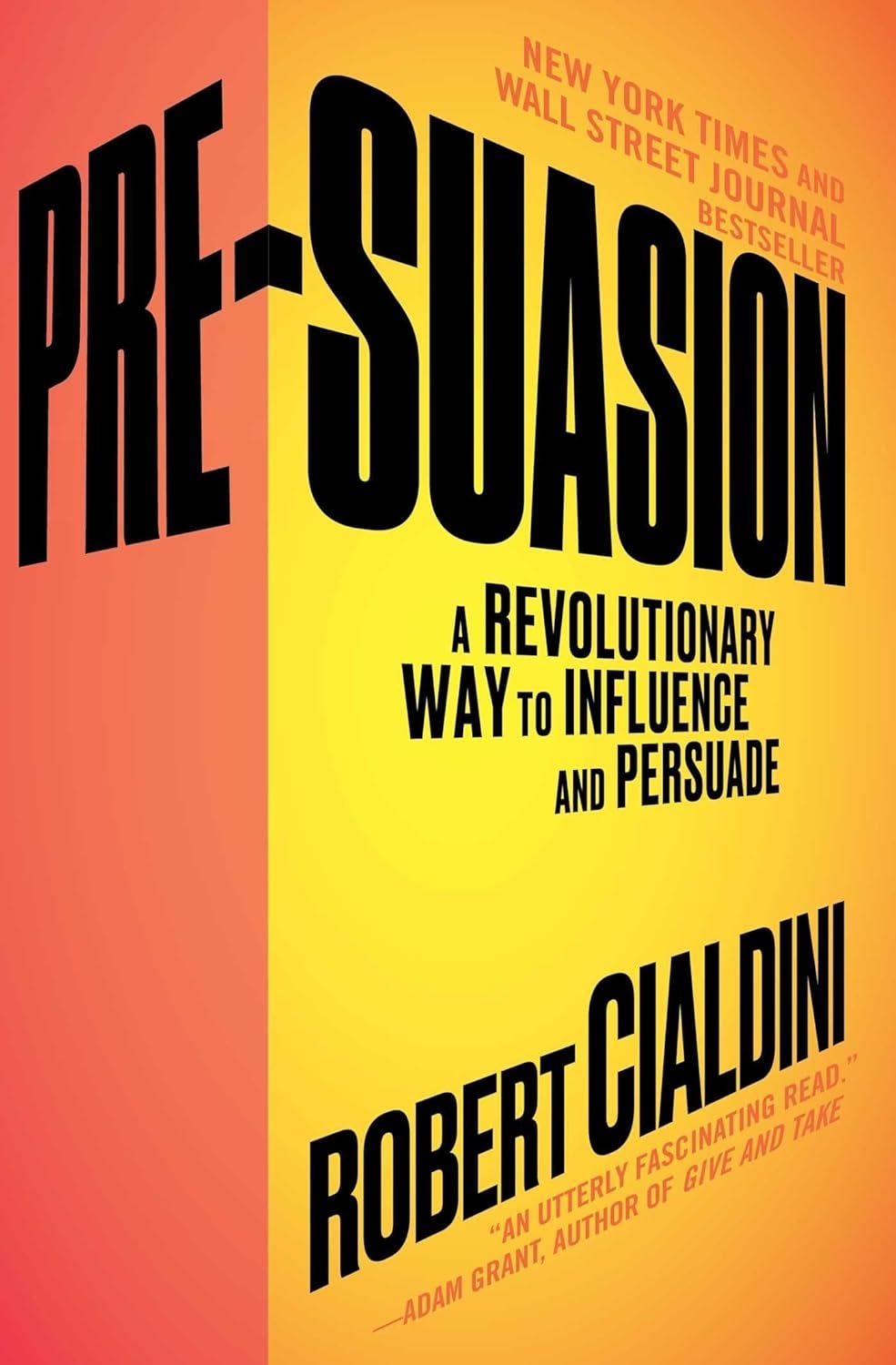Pre-Suasion: A Revolutionary Way to Influence and Persuade
Master the art of pre-suasion and get people to say "yes" before you even ask
Good evening, friends! Welcome to the ReadVault Club. I'm Tom Niklas, a seasoned writer and book reviewer. Please subscribe to me and join us in reading 52 books a year together.
I specialize in providing book reviews on personal growth, leadership, family and parenting, mental health, humanities, and history. I aim to assist busy citizens enjoying the benefits of reading books but struggling to find the time.
To help more people to read books easily, don't forget to like, share, and comment below. Your actions are helping more people.
I. Introduction
Today, we're diving into a book that completely changed my thoughts on communication and influence. It's called "Pre-Suasion: A Revolutionary Way to Influence and Persuade," and let me tell you, even the title itself got me thinking differently.
You see, it's not "persuasion" - that's the word we all know. This is "pre-suasion." The author, Robert Cialdini, actually created this word, and it's brilliant! You know how "pre" means "before," right? So, pre-suasion is all about what happens before the persuasion even starts. It's about preparing the stage, and creating the proper context so your message lands with maximum impact. Pretty cool, huh?
But before we get too deep into that, let me share a quick story about how pre-suasion works in everyday life. Have you ever walked into a store, grabbed a free sample, and then suddenly found yourself buying something you hadn't planned on? You know, like that time I walked into Costco for milk and walked out with a giant bag of those delicious cinnamon rolls? It wasn't on my list, but those free samples got me!
It turns out that there's a whole science behind these seemingly spontaneous decisions, and that's exactly what "Pre-Suasion" explores. The author, Robert Cialdini, is a renowned social psychologist who's been studying the art and science of persuasion for decades. He's done tons of research, written bestselling books, and worked with all kinds of organizations. This guy knows what makes people say "yes"!
So, how does this "pre-suasion" thing work? Cialdini argues that it's not just what you say that matters, but also what people are paying attention to before they hear your message. By strategically directing their focus to specific concepts or ideas, you can prime them to be more receptive to your request. It's like planting a seed in their mind that helps your message grow.
For example, imagine you're trying to convince your boss to approve a new project. Now, you could just walk into her office and lay out all the facts and figures. But what if, just before your meeting, you sent her an article about a competitor who's already using a similar approach and seeing great results? By subtly directing her attention to the concept of social proof – the idea that if others are doing it, it must be a good idea – you've pre-persuaded her to be more open to your proposal.
And that's why this book is so important for everyone, no matter what you do. Whether you're trying to land a new client, negotiate a raise, get your kids to eat their veggies, or simply become a more effective communicator, pre-suasion can give you a serious edge. It's important to understand the psychology of influence and utilize it ethically to accomplish your objectives.
II. The Power of Attention
So, we've established that pre-suasion is all about what you do before you deliver your message. But what exactly should you be doing? Well, it all comes down to attention. Cialdini argues that attention is the gateway to influence. It's like a spotlight that illuminates certain concepts and ideas in people's minds, making them more prominent and influential.
Consider this: Our brains are constantly bombarded with information. It's like a non-stop newsfeed of sights, sounds, thoughts, and feelings. We cannot possibly pay attention to everything at once, so our brains have developed this amazing ability to filter out the noise and focus on what seems most relevant at any given moment.
Here's the key: whatever we focus on, whatever captures our attention, naturally feels more important. It's like our brains are saying, "Hey, if we're paying attention to this, it must be worth noticing." And that's where pre-suasion comes in. By strategically directing attention to specific concepts or ideas before you make the request, you can pre-load them with importance and make them more persuasive.
Let me give you a couple of examples. First, let's talk about marketing. Have you ever noticed how online furniture stores often use images of fluffy clouds or comfy settings on their websites? It's not just about aesthetics. By subtly directing your attention to the feeling of comfort, they're pre-suading you to prioritize comfort over price, when you're choosing a sofa.
Second, let's look at politics. Think back to the months leading up to the last election. The news was filled with stories about the economy, healthcare, immigration, and so on. Now, whether you realize it or not, the amount of coverage each issue received, and the amount of attention it got, likely influenced your perception of its importance, and ultimately, your vote. That's agenda-setting in action - a classic example of pre-suasion.
Keep reading with a 7-day free trial
Subscribe to ReadVault to keep reading this post and get 7 days of free access to the full post archives.



